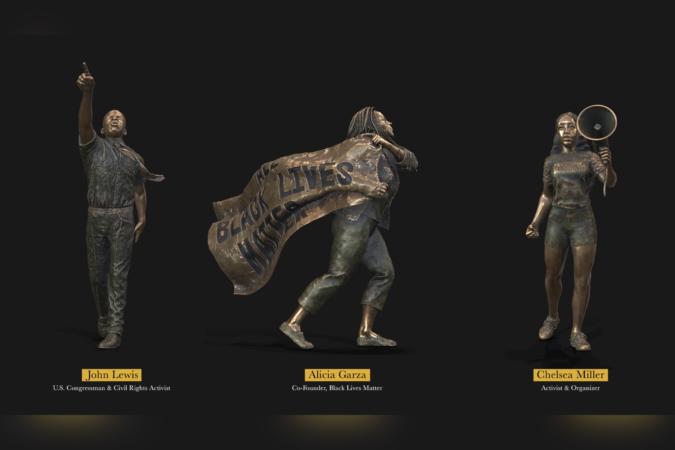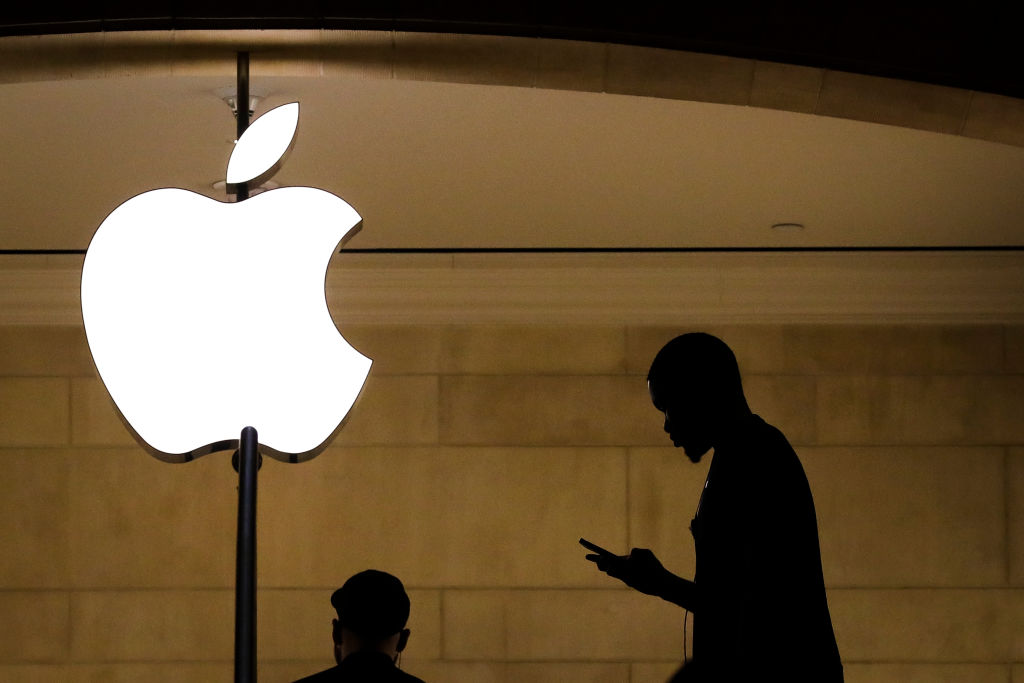Who said you have to be on the frontlines to make a difference? Luckily, thanks to social media, technology and Color Of Change, you can see the change you’ve been waiting for by the scroll of your fingers.
At the top of Black History Month, the nation’s largest online racial justice organization Color Of Change launched The Pedestal Project, “an Augmented Reality (AR) experience on Instagram that lets users place statues of racial justice leaders atop empty pedestals where confederate statues once stood as a refreshing new symbol of equality and progress.”
Color Of Change has used their platform to be vocal about the removal of statues of white supremacist, racist and bigot leaders of this country’s history. In replacement of the Robert E. Lee and Stonewall Jackson, users have an opportunity to choose Civil Rights leader and Former United States Congressman John Lewis, co-founder of the Black Lives Matter Movement, author, and principal at Black Futures Lab, Alicia Garza, or co-founder of Freedom March NYC, Chelsea Miller, to take their rightful place as a figure of the community.
“The Pedestal Project allows us to imagine a United States that was committed to remembering rather than forgetting, a country striving toward equality and justice,” Garza said in a press release sent to AfroTech.
Chelsea Miller added, “This partnership with Color Of Change is a reminder of the power of this movement and the intergenerational work that is required to reimagine what’s next.”
AfroTech connected with Color Of Change President Rashad Robinson to discuss the inspiration behind The Pedestal Project, importance of symbols in our community and how social media and technology can be of use during the social justice movement.

This interview has been edited for clarity and length.
AfroTech: Talk to me about The Pedestal Project and what the inspiration was behind it.
Rashad Robinson: Color Of Change created The Pedestal Project as an innovative way to mobilize online outrage into a tangible force of power to create racial change. Thanks to the movement for racial justice, so many Confederate monuments have been removed, but what have we replaced them with? How can we create symbols that inspire people to fight for justice in this next decade and beyond?
As an organization dedicated to driving systemic change for racial justice — to create a more human and less hostile world for Black people in America — Color Of Change has always understood the role that these monuments play in slowing down progress. The Pedestal Project uses technology to help us all see a world where statues of racial justice leaders inspire people to keep thinking about the changes we need to make, and actually get involved in making them. We’re highlighting the need to see and uplift people who stand for deep principles of justice — and who also know how to fight for it.
AfroTech: Why is the advocacy of removal of contentious statues important for the Black community?
Robinson: Confederate statues are symbols of white supremacy. In order for us to build a more just and equitable nation for Black people and marginalized communities alike, these contentious statues and symbols need to be removed from the public spaces we share. They were erected, mostly long after the Civil War, with a purpose: to show dominance and draw a line that said, ‘progress will not happen here.’ Many Confederate statues and symbols were placed in front of courthouses, where laws and decisions are made about this country’s future. And even today, Confederate statues continue to encourage white nationalists who are hell bent on resisting progress.
This mentality has affected both local and national culture, and in turn, it slows down the pace of change, or even reverses it at both the societal and policy level. As we continue to confront America’s long history of racism, the removal and replacement of these monuments is just one of the many steps we need to move our country forward toward actionable racial justice.
AfroTech: What inspired your choices of John Lewis, Alicia Garza, and Chelsea Miller as ‘three incredible racial justice leaders to honor and virtually place on the empty pedestals?’
Robinson: This initial group of honorees encapsulates freedom fighters of the past, modern-day activists, and young change agents who are paving their way for generations to come. It was important for us to honor the history and one of the leaders within the civil rights movement, while celebrating the work of those from the modern day racial justice movement. By using virtual technology to replace these statues with people, events and ideas that move our country forward instead of taking us backward — we are turning these empty pedestals into a celebration of progress.
AfroTech: With the uprising of social media platforms and applications, what was the importance of using the AR experience?
Robinson: This AR experience through our Instagram page gives people the ability to open their mobile phone, place one of these statues in that empty space and hear the motivating words from the civil rights leaders. AR provides an immersive and educational experience to mobilize people to take action in a new, tangible way. Seeing how people love using filters and custom lenses, we are excited to offer an experience to our social media followers that helps drive our mission to power racial justice.
AfroTech: How do you see the relationship between social and racial justice, and technology evolving over the next few years?
Robinson: Color Of Change is built on the foundation that technology is a powerful organizing tool. We were built in the aftermath of Hurricane Katrina — the first petition was an email to people in our networks. The ability to expose and mobilize is greater than it used to be because of the power of these social platforms. They are not tools to get rid of, but tools we have to make better. For years, Color Of Change has pushed social media companies like Facebook and Twitter to make serious commitments, and enact sweeping measures to dismantle broken business structures that prioritize profit and power over Black lives and our democracy.
Their continued lack of diversity exacerbates their poor decision-making around misinformation and targeted hate on their platforms. When you don’t have enough Black employees and leaders in your company, and when you fail to listen to and include the few you hire — it’s more difficult to ensure that your culture, your products and your services are equitable and anti-racist.
AfroTech: What do you hope users will gain from this augmented reality experience?
Robinson: Truth telling and symbols matter. The Pedestal Project allows us to acknowledge change agents of the past, honor those who are making a significant impact today, and leave room for those civil rights leaders of tomorrow who have yet to be born. But it’s not enough to simply remove confederate statues, we must also replace them with symbols of a whole new set of values — and symbols that represent what it takes to fight for those values and win.
We’re telling the story of justice to show the connection between activism and real change, and encourage those who believe in progress and racial equity to continue taking action — not just during Black history month— but all year round. We hope this experience will raise awareness for racial justice and create real efforts to change laws and outcomes for Black communities.

















